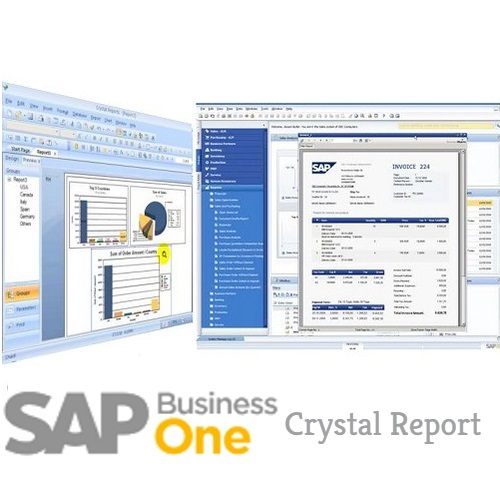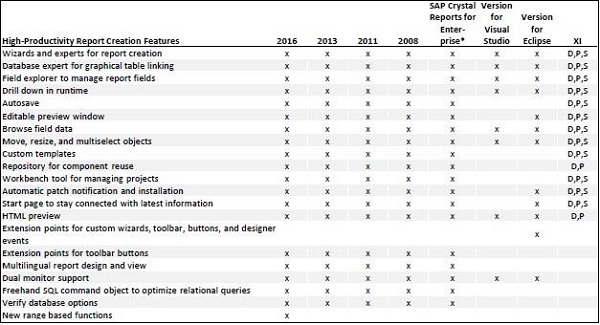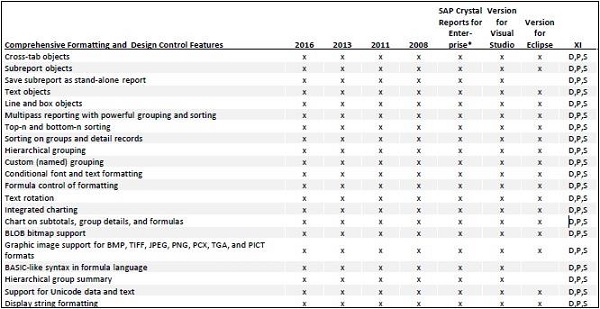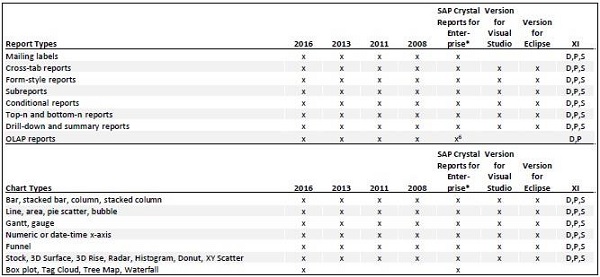SAP Crystal Reports is a Business Intelligence tool which is used to generate reports from both SAP and non-SAP data sources. It enables end users to generate reports that includes exceptional visualizations and implement new business requirements into reports to reduce dependency on IT and Report developers.

SAP Crystal Reports can connect to any data source that include Relational databases like Oracle, OLAP data source systems like BW, or also with XML data. You can create a simple report or you can also use complex or specialized tool of Crystal Reports to create advance level reports for end users. It is mostly used for pixel perfect reporting for CEOs and Managers.
Benefits of Using Crystal Reports
Flexible and customized report − You can quickly create highly formatted, pixel-perfect reports using SAP Crystal Reports with high level design interface and efficient workflows.
Powerful report delivery options − You can deliver personalized reports to your business end-users in their preferred language and format.
Data source connectivity − You can connect to information sources directly. Data sources include: Native, ODBC, OLE DB, and JDBC connectivity to relational, OLAP, web services, XML, enterprise data sources, and salesforce.com.
Expanded support for Excel − You can take full advantage of the Excel file format by allowing more data to be exported to a single worksheet, without spanning multiple worksheets.
Windows operating system compatibility − SAP Crystal Reports software 2013 is certified compatible with Microsoft Windows 7.
Mobile compatibility − You can also open interactive reports through your mobile devices.
SAP Crystal Reports, Adobe Flash and HTML 5 integration − It enables SAP Crystal Reports developers to produce powerful "mash-ups" pulling data from various sources.
Competitors − SAP Crystal Reports competes with several products in Microsoft market like SQL Server Reporting Services SSRS, XtraReports, ActiveReports, and List & Label.
Installation Requirements for Crystal Reports
Following are the basic requirements to install Crystal Reports −
PC with AMD or Intel based processors, Dual Core CPU, 2 GB RAM
Approximately 4GB available hard drive space (for English only, 8 GB for all languages)
Microsoft Windows 7 SP1, Windows 8, Windows Server 2008 SP2, Windows Server 2008 R2 SP1, Windows Server 2012
Languages available − English, Finnish, French, German, Hungarian, Italian, Japanese, Korean, Norwegian, Polish, Portuguese, Chinese simplified, Chinese traditional, Czech, Danish, Dutch, Slovakian, Slovenian, Spanish, Swedish, Thai, Turkish, Romanian, Russian
Technical Specifications
Hardware Requirements − Intel Pentium III or equivalent processor, minimum 512 MB RAM recommended
Disk Space − 2 GB for default installation with English language, 4 GB for default installation with all languages installed
Versions and Features Comparison
Let us take an example to decode the SAP Crystal Reports version format. Assume 12.1.2.957.12 is the version of CR 2008. Here 1 signifies that it is Service Pack 1, .2 signifies that Fix Pack 1.2 has been applied on top of Service Pack 1. The last three of four digits are not important. Another example, if you have version 12.3.1.684, I know I am using CR 2008, Service Pack 3, Fix Pack 3.1.
Editions − Developer (D), Professional (P), Standard (S)

Editions − Developer (D), Professional (P), Standard (S)


Editions − Developer (D), Professional (P), Standard (S)

Editions − Developer (D), Professional (P), Standard (S)


 Best resource for Online free Education
Best resource for Online free Education